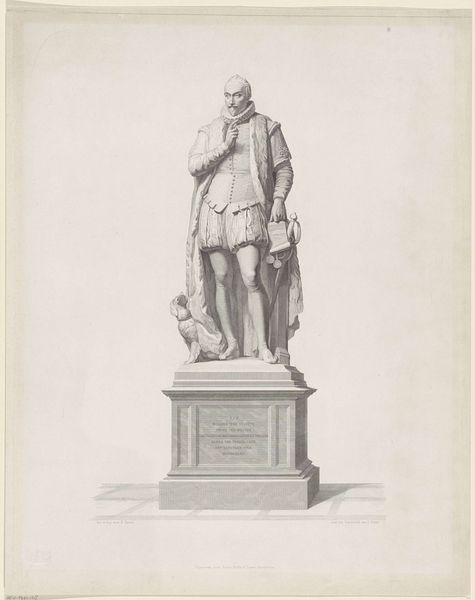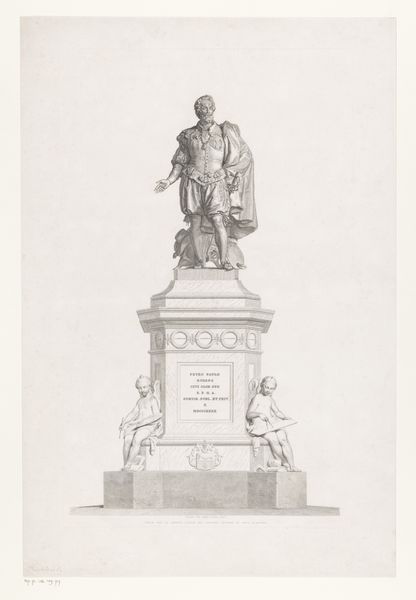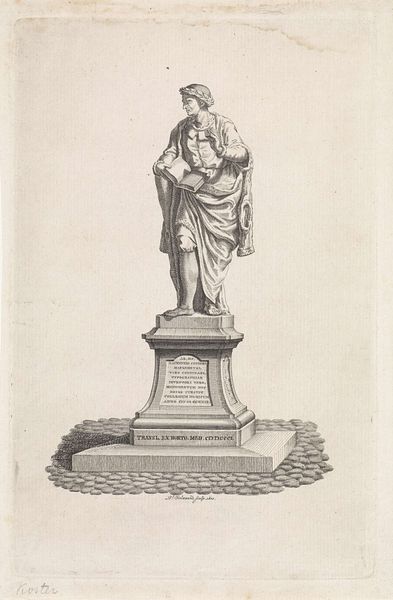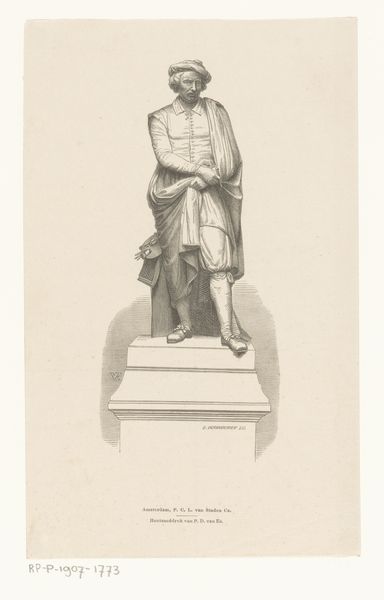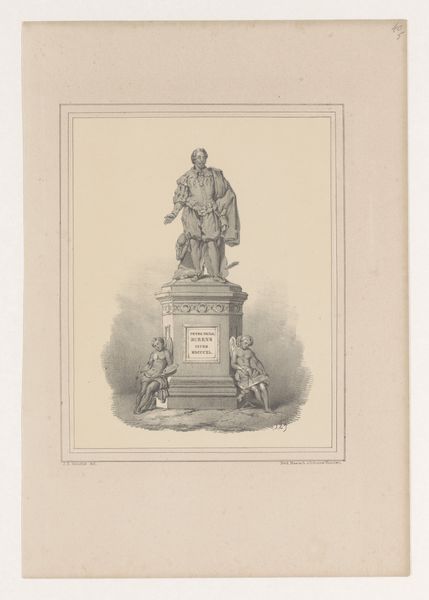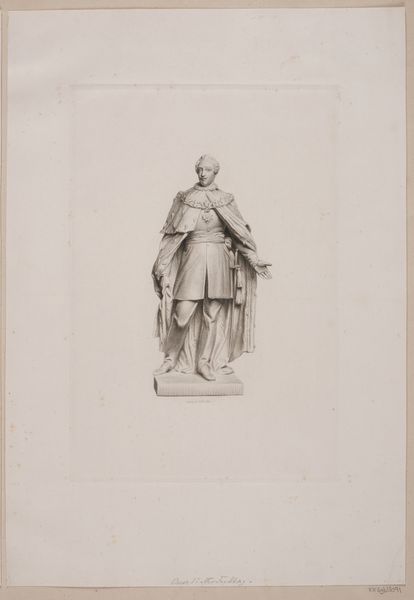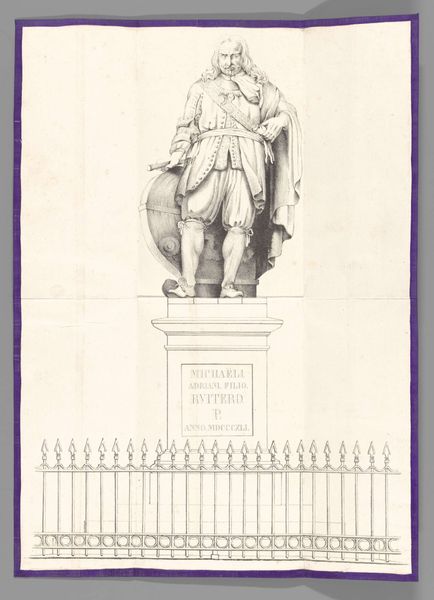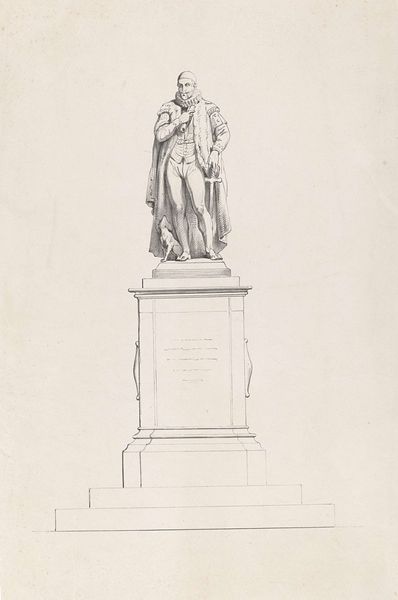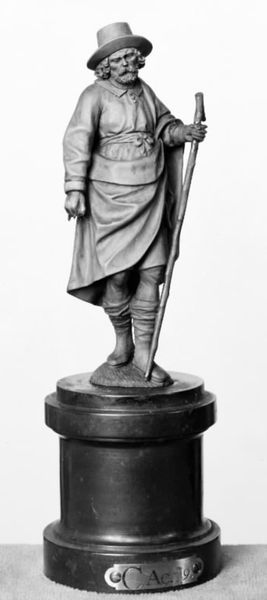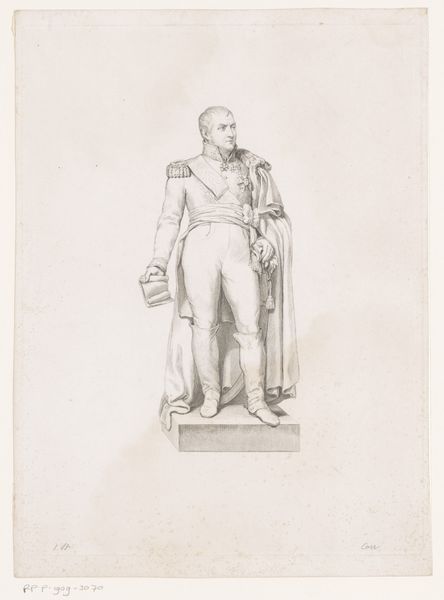
print, metal, sculpture
#
portrait
# print
#
metal
#
classicism
#
sculpture
#
history-painting
#
academic-art
#
realism
Dimensions: height 449 mm, width 253 mm
Copyright: Rijks Museum: Open Domain
Editor: This print, depicting the sculpture of Michiel de Ruyter by Frans Molenaar, created between 1841 and 1843, strikes me as quite formal and stately. It feels like an attempt to create a heroic image. What historical factors might have influenced this particular representation of de Ruyter? Curator: That's a great starting point. Considering its creation in the mid-19th century, we should examine the rise of nationalism and the need for national heroes in the Netherlands. How does this image contribute to constructing a Dutch identity? Think about it: De Ruyter was already a celebrated naval hero, but what specific aspects of his legacy are emphasized here, and why might that be? Editor: I see. The way he's positioned with the globe suggests his naval power and exploration. And the classical style of the sculpture, does that connect him to ideas of civic virtue and strength? Curator: Precisely! The classicism adds a layer of historical legitimacy and grandeur. Furthermore, consider the institutional context. Where would such a print have been displayed or circulated? Who was the intended audience, and how might they have interpreted this image in relation to their own sense of Dutch history and identity? Editor: Probably in schools or public buildings, teaching people about Dutch accomplishments and maybe instilling some national pride. Would people have questioned the accuracy of his image or accepted it as truth? Curator: That's a crucial question. While striving for realism, academic art of this period was always mediated by the artist's interpretation and the prevailing ideology. It prompts us to think critically about how historical figures are presented and how those representations serve particular purposes. Editor: So it’s not just about de Ruyter; it’s about creating a specific version of Dutch history and national identity. I hadn't considered the broader cultural impact this print could have. Curator: Exactly. By analyzing the visual language and historical context, we gain insight into how art plays a vital role in shaping collective memory and national narratives. Editor: It's fascinating to realize how even a seemingly straightforward image like this one can reveal so much about its time and cultural values. Thanks, that gives me a lot to think about.
Comments
No comments
Be the first to comment and join the conversation on the ultimate creative platform.
